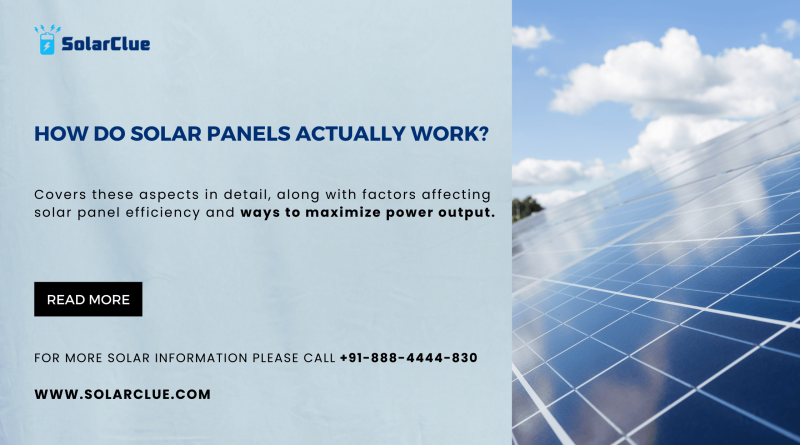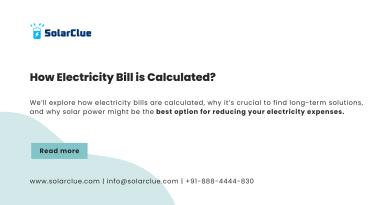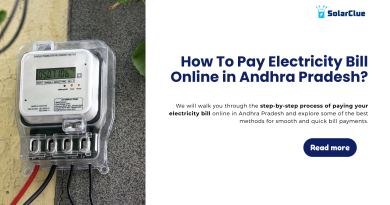How Do Solar Panels Actually Work?
Solar energy is a rapidly growing renewable energy source that provides a sustainable alternative to fossil fuels. Understanding how solar panels generate electricity involves delving into the science of the photovoltaic effect, the structure of solar panels, and the conversion of electricity for household use. This blog covers these aspects in detail, along with factors affecting solar panel efficiency and ways to maximize power output.
Table of Contents
- 1 The Science Behind Solar Energy
- 1.1 The Photovoltaic Effect in Detail
- 1.2 Structure of a Solar Panel
- 1.3 Conversion of DC to AC Electricity: The Role of Inverters
- 1.4 Factors Affecting Solar Panel Efficiency
- 1.5 Maximizing Power Output
- 1.6 Comparing Solar Panels to Traditional Power Sources
- 1.7 The Future of Solar Panel Technology
- 1.8 Common Misconceptions About Solar Power
- 1.9 Conclusion
- 1.10 Factors Affecting Solar Panel Efficiency
- 1.11 FAQs
The Science Behind Solar Energy
Solar energy originates from the sun, which emits photons as part of solar radiation. These photons carry energy that can be harnessed and converted into electricity through solar panels. The process of converting sunlight into electrical energy is known as the photovoltaic effect.
The Photovoltaic Effect in Detail
Role of Photons
Photons are particles of light that carry energy from the sun. When these photons strike the surface of a solar cell, they can transfer their energy to electrons in the cell’s semiconductor material.
Role of Electrons
Electrons in the semiconductor material become energized by the incoming photons. This added energy allows electrons to break free from their atomic bonds and move freely within the material, creating an electric current.
Role of Semiconductors
Semiconductors, typically silicon, are materials with properties between those of conductors and insulators. They form the basis of solar cells. The semiconductor is treated or “doped” to create an electric field that helps direct the flow of freed electrons, generating a current.
Structure of a Solar Panel
A solar panel is composed of several layers and components that work together to capture sunlight and convert it into electricity.
Solar Cells
The basic building block of a solar panel, each solar cell is made of semiconductor materials that generate electricity when exposed to sunlight. Multiple cells are connected to form a solar panel.
Individual Cells to Complete Module
Solar cells are arranged in a grid-like pattern and sandwiched between protective materials, such as glass on the front and a backsheet on the rear. These cells are connected in series and parallel to form a module, which is the complete solar panel.
Junction Boxes and Backsheets
The junction box on the back of the panel houses electrical connections and bypass diodes to manage the flow of electricity. The backsheet provides protection against environmental factors and mechanical damage.
Conversion of DC to AC Electricity: The Role of Inverters
Direct Current (DC) vs. Alternating Current (AC)
Solar panels generate direct current (DC) electricity, where electrons flow in one direction. However, most household appliances and the electrical grid use alternating current (AC), where the flow of electrons periodically reverses direction.
Function of Inverters
Inverters are essential components of solar power systems. They convert the DC electricity produced by solar panels into AC electricity that can be used by household appliances and fed into the electrical grid. There are different types of inverters, including string inverters, microinverters, and power optimizers, each offering various advantages in terms of efficiency and installation flexibility.
Factors Affecting Solar Panel Efficiency
Quality of Solar Cells
Higher quality cells generally have better efficiency, converting more sunlight into electricity.
Installation Angle and Orientation
Proper installation angle and orientation towards the sun maximize sunlight exposure and energy production.
Shading and Obstructions
Shading from trees, buildings, or other obstructions can significantly reduce the efficiency of solar panels.
Temperature
Higher temperatures can decrease the efficiency of solar panels. While they need sunlight to generate power, excessive heat can reduce their performance.
Maximizing Power Output
Regular Maintenance
Regular cleaning and maintenance of panels ensure they are free from dirt and debris, maximizing their efficiency.
Optimal Placement
Placing solar panels in areas with maximum sunlight exposure and minimal shading ensures the highest energy production.
Advanced Technologies
Using advanced technologies like bifacial panels, which capture sunlight from both sides, and tracking systems, which follow the sun’s movement, can enhance power output.
Comparing Solar Panels to Traditional Power Sources
Solar panels offer a clean, renewable source of energy that reduces reliance on fossil fuels. Unlike traditional power sources, solar energy does not produce greenhouse gases or pollution. Additionally, solar power can reduce electricity bills and provide energy independence.
The Future of Solar Panel Technology
Advancements in solar technology are continually improving efficiency, reducing costs, and expanding applications. Emerging technologies such as perovskite solar cells, solar skins, and integrated photovoltaic systems offer promising developments that could revolutionize the solar industry.
Common Misconceptions About Solar Power
Solar Panels Don’t Work in Cloudy or Cold Climates
Solar panels can still generate electricity in cloudy or cold conditions, although their efficiency may be reduced compared to sunny conditions.
Solar Energy is Too Expensive
The cost of solar panels has decreased significantly over the years, making solar energy more affordable and accessible.
Solar Panels Require a Lot of Maintenance
Solar panels require minimal maintenance, mainly periodic cleaning and inspections to ensure optimal performance.
Conclusion
Understanding how solar panels generate electricity involves grasping the science behind the photovoltaic effect, the structure of solar panels, and the role of inverters. Proper installation, maintenance, and technological advancements play crucial roles in maximizing the efficiency and benefits of solar power systems. Solar energy is a sustainable and increasingly affordable option for meeting global energy needs.
Factors Affecting Solar Panel Efficiency
| Factor | Impact on Efficiency | Maximizing Efficiency |
|---|---|---|
| Quality of Solar Cells | Higher quality cells = better efficiency | Invest in high-quality panels |
| Installation Angle/Orientation | Optimal angle/orientation = maximum exposure | Adjust panels to face the sun at the best angle |
| Shading and Obstructions | Shading reduces output | Install panels in shade-free areas |
| Temperature | Higher temperatures can reduce efficiency | Ensure proper ventilation and cooling |
| Maintenance | Dirt/debris decrease efficiency | Regularly clean and maintain panels |
| Advanced Technologies | Bifacial/tracking systems increase output | Utilize advanced technologies to enhance performance |
Here at SolarClue®, we offer a smart, practical, and “beautiful” solution. You will be answered for all the questions related to Solar.
We provide all kinds of brands that are the Best Solar panels in India.
If you are the one who is planning for the solar power system. Don’t hesitate to contact our team!
Looking forward to empowering you with solar energy, just like hundreds of our other clients!
FAQs
1. What is the photovoltaic effect?
The photovoltaic effect is the process by which solar cells convert sunlight into electricity, involving the excitation of electrons in a semiconductor material.
2. What are the main components of a solar panel?
The main components include solar cells, junction boxes, and backsheets.
3. How do inverters work in a solar power system?
Inverters convert the direct current (DC) electricity produced by solar panels into alternating current (AC) electricity used by household appliances and the electrical grid.
4. What factors affect the efficiency of solar panels?
Factors include the quality of solar cells, installation angle and orientation, shading from obstructions, and temperature.
5. Do solar panels work in cloudy or cold climates?
Yes, solar panels can still generate electricity in cloudy or cold conditions, although their efficiency may be reduced compared to sunny conditions.



